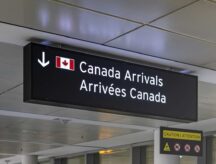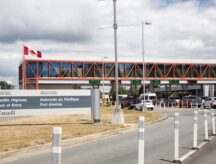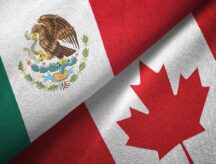Rules for driving to Canada from the U.S. during the pandemic
After nearly a year and a half, Canada is reopening to fully-vaccinated U.S. tourists as of 12:01 Eastern Time on August 9.
For now, the new rules only apply to U.S. citizens and permanent residents, specifically. All other nationals are expected to be let in on September 7, pending the state of the pandemic at that time.
Discover if You’re Eligible for Canadian Immigration
Canada will only consider you "fully vaccinated" if you have received vaccines that are approved in Canada, such as Pfizer, Moderna, Astra Zeneca, and Janssen (Johnson & Johnson). Also, two weeks need to have elapsed between your last dose and your attempt to enter Canada.
Being fully vaccinated means you will not need to take a negative COVID-19 test upon arrival, unless you get randomly selected. You also won't have to quarantine or take the day-eight test. However, you still have to come with a pre-arrival PCR test taken within 72 hours before trying to cross the border. Rapid tests are not accepted.
Children under age 12 who cannot be vaccinated will be allowed to enter Canada, but they have to do all the same testing requirements as unvaccinated travellers.
All information, including documents for children, has to be submitted to Canadian officials through ArriveCAN prior to arrival.
How do I use ArriveCAN?
Pretty much everyone coming to Canada needs to use ArriveCAN. The government designed this app so that travellers could communicate with border officers during the pandemic. Now, it is being used for travellers to prove their vaccination status, as well as quarantine plans, travel information, etc.
You can download ArriveCAN as a mobile app or you can create an account online.
All documents have to be submitted in English or French, or else you need a certified translation. According to the government website, the documents you need to submit include:
- the contact information for you and everyone you're staying with, as long as you are staying at the same quarantine location;
- the purpose of your travel;
- date of arrival;
- port of entry;
- vaccination information, and proof;
- information about the countries you have visited in the 14 days before arriving to Canada, except where you had a connecting flight along the journey from one destination to another; and
- your quarantine plan.
Even though fully vaccinated travellers are not necessarily required to quarantine, you will still need to show up with a plan in case the border officer determines you have to self-isolate.
https://www.youtube.com/watch?v=8ct8SsQFJfM
After you submit your documents to ArriveCAN, you will get a receipt by email which you can show the border services officer. If you need to make any changes after you submitted your information, you will have to start over and resubmit your documents.
Questions to answer for quarantine plan
For your quarantine plan, the border official will want to know:
- Do you have a place where you can quarantine for 14 days or possibly longer?
- What is the address of your quarantine location?
- Can you avoid all contact with other people who didn't travel with you at your place of quarantine?
- Will you have access to basic necessities like food, medicine, and heat without leaving quarantine?
- At your place of quarantine, are there any people who are at increased risk from COVID-19? This could include people age 65 years and older, people who have underlying medical conditions or compromised immune systems.
- Are there people at that place who work in a facility where they may contact people who are at increased risk from COVID-19?
- Whether your place of quarantine is a group living environment or multi-family household? Will there be roommates there who you cannot avoid who did not travel with you?
The officer's decision will be based on the facts established from these questions. Every case is going to be different. For your specific case, you can contact the Canadian Border Services Agency (CBSA).
Anything else I need?
All the normal border-crossing procedures still apply, just wear a mask when you arrive.
In addition to normal screening questions, the border officer will ask you how you are feeling and assess you for symptoms of COVID-19. If they suspect you are ill, they may refer you to get a medical assessment by public health officials.
When driving to Canada from the U.S. you need a valid I.D., such as a U.S. passport, NEXUS card, or enhanced drivers licence. Children under age 16 need only show proof of U.S. citizenship.
Border officials recommend you plan ahead and check border wait times on the CBSA webpage.
Also, make sure you are not importing any prohibited goods, including cannabis. In fact, you also have to declare any organic products you are bringing to Canada such as food and plants. Animals must also be declared. Dogs and cats age three months and older need valid signed and dated certificates from a veterinarian verifying vaccinations against rabies.
Declare all your purchases, and if you are travelling with more than $10,000 CAD in any currency. It is not illegal to bring it, you just have to declare it. You also have to declare any firearms or weapons you are carrying when you cross the border, keeping in mind most weapons are prohibited in Canada.
Discover if You’re Eligible for Canadian Immigration
© CIC News All Rights Reserved. Visit CanadaVisa.com to discover your Canadian immigration options.
- Do you need Canadian immigration assistance? Contact the Contact Cohen Immigration Law firm by completing our form
- Send us your feedback or your non-legal assistance questions by emailing us at media@canadavisa.com







